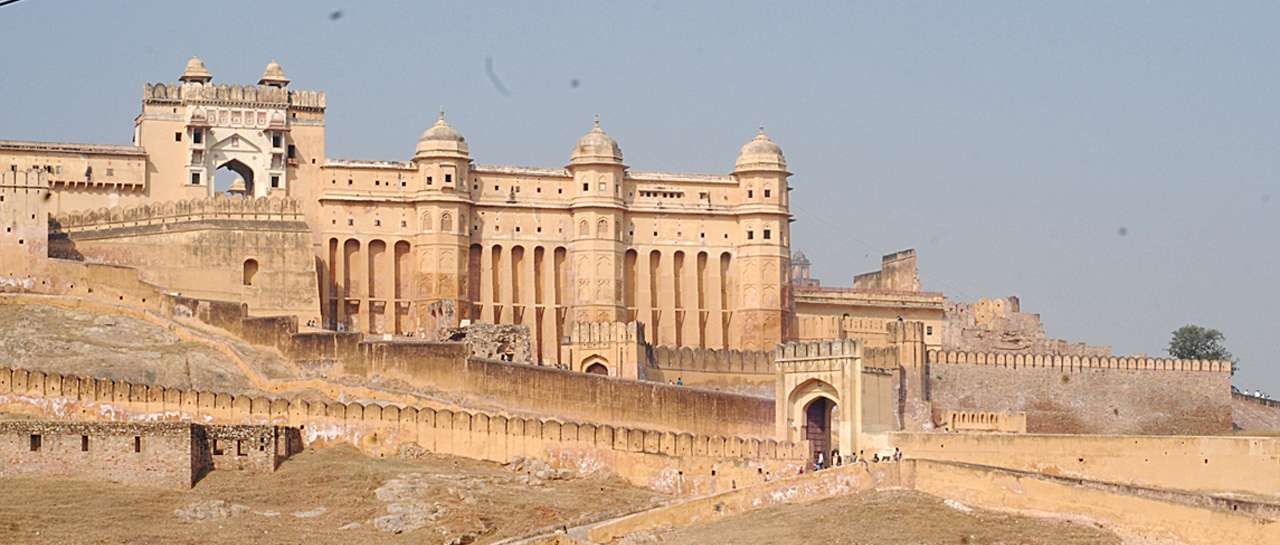Ranthambore National Park is a celebrated wildlife destination in India, located in Rajasthan’s Sawai Madhopur district. The national park has been in the limelight because of the significant tiger population. Sighting tigers during a Ranthambore safari is quite common. However, it is never guaranteed by the forest department or the safari driver and guide about a confirmed sighting of tigers. Undoubtedly, tigers are the primary attraction of Ranthambore National Park, but there are other attractions also that are worth exploring. It is not just wildlife that attracts thousands of tourists from all over the country. There is a layer of history and spirituality, along with the wilderness. Ranthambore Fort and Trinetra Ganesh Temple are the two most visited places inside the Ranthambore National Park. Even if you miss spotting tigers during the Ranthambore Safari, the Ranthambore Fort and the Trinetra Ganesh Temple will mesmerise you for sure. Also, it is always recommended to book at least 2-3 safaris as there are 10 zones in Ranthambore National Park. Embarking on multiple safaris enhances the chances of spotting the majestic Bengal tigers.
Explore Ranthambore Fort and Trinetra Ganesh Temple
- Ranthambore Fort
The history of Ranthambore Fort is deeply tied to the town of Sawai Madhopur in Rajasthan. This ancient fort stands proudly within Ranthambore National Park, surrounded by the rugged beauty of the Aravalli and Vindhya ranges. The name “Ranthambore” comes from two nearby hills – Rann and Thambor. Perched on Thambor Hill, the fort rises about 481 meters above sea level and offers panoramic views of the park’s dry, rocky terrain. Recognised by UNESCO as a World Heritage Site, it stands as a timeless symbol of Rajasthan’s hill forts. Believed to be built in the 8th century by the Chauhan rulers, the fort gained prominence under Raja Hammir Dev Chauhan, who was crowned in 1283 A.D. Over centuries, it witnessed fierce battles against rulers like Qutub-ud-din, Alauddin Khilji, Feroz Tughlaq, and Bahadur Shah of Gujarat, before falling into Mughal hands. Later, it was returned to the Maharaja of Jaipur and remained with them until India’s independence.
Spread across nearly 7 km, the fort still holds remnants of palaces, temples, step-wells, and gates. The famous Ganesha Temple attracts thousands of devotees, especially on Wednesdays. Visitors often send wedding invitations to Lord Ganesha, making this historic fort a living cultural landmark of Rajasthan.
- Trinetra Ganesh Temple
Situated within the ancient Ranthambore Fort in Rajasthan, the Trinetra Ganesha Temple holds immense spiritual and historical significance. It is believed to be the oldest and most sacred Ganesha temple in the state, where Lord Ganesha and his entire family are worshipped together. Located about 12 km from Sawai Madhopur, this temple is built from the distinctive red Karauli stone, giving it a majestic and divine charm. According to Hindu belief, Lord Ganesha is the remover of obstacles and the god of wisdom, wealth, and good fortune. Thousands of devotees from across India send letters and wedding invitations to this temple each year, seeking his blessings for success and prosperity.
The legend behind Ganesha’s birth adds to his divine aura. Goddess Parvati created a boy to guard her privacy while bathing. When Lord Shiva returned, the boy stopped him from entering. In anger, Shiva beheaded him. Seeing Parvati’s grief, Shiva restored the boy’s life with an elephant’s head, declaring that Ganesha would always be worshipped first among all gods. Today, devotees flock to this temple for daily prayers. Five aartis are performed here every day, spreading spiritual energy and peace across the fort’s serene surroundings.
